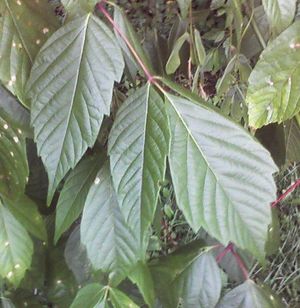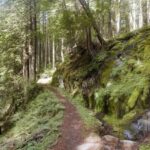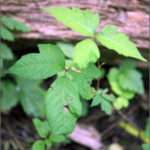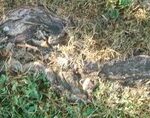You’re hiking in the woods. Along the way, you’ve noticed poison ivy and there have even been some massive hairy vines growing up the sides of large trees. Near a stream you see a few trees just covered with poison ivy. You are curious what kind of tree this is that the ivy has gotten such a stranglehold on it. You look and look to find the identifying leaves, but all you see is the poison ivy. That is because it isn’t poison ivy at all. It is the Acer negundo or Boxelder tree – a kind of maple tree. It is variably also called the Ash-leaf Maple or the California or Western Boxelder.
Leaves of the Boxelder – Comparison to Poison Ivy
As mentioned above, the leaves of the Boxelder or Manitoba Maple in Canada (which typically has five leaflets of oppositely pinnately compound leaves) closely resembles poison ivy (the leaves of which consist of three leaflets of alternate pinnately compound leaves). The Free Dictionary defines pinnate as “resembling a feather; having parts or branches arranged on each side of a common axis…”
Flower of the Boxelder
The flower of the Boxelder tree is rather indescribable. It slightly resembles a collection of very tiny bunches red bananas dangling from bright green stems, and may be seen in this photograph.
Other Boxelder Characteristics
It can grow a multiplicity of trunks and be quite dense. The Boxelder is a fast-growing tree with soft wood and smooth bark that becomes lightly ridged with maturity. Its sap is sweet, and it bears seed pairs that resembling those of most other maple trees. It is found in most of the eastern part of the United States, and south central Canada. Although the wood is weak and considered undesirable for most uses, Boxelder Maple burls are used in artistic pieces.
Identifying the Boxelder in Winter
The marvelous website “Nomad’s Land” provides photographs that help identify many trees in winter, including the Boxelder. The Boxelder twig displays a green to reddish-purple color with a waxy, white coating. Of course, a probable riverbank location makes its identification simpler.
Other Boxelder Uses
Although it is not used to make grocery-store maple syrup, Boxelder sap is used to make another product sometimes called mountain molasses. Its wood, though not useful for most purposes, can be used to make boxes and crates. It is sometimes used for biomass fuel or as a source of wood pulp.
Advisory – Make certain before touching that what you are considering truly is a Boxelder tree and not poison ivy!
References and Resources:
Cornell Sugar Maple Research & Extension Program – Boxelder
Nomad’s Land – Manitoba Maple Acer negundo
Vanderbilt University – Acer negundo





